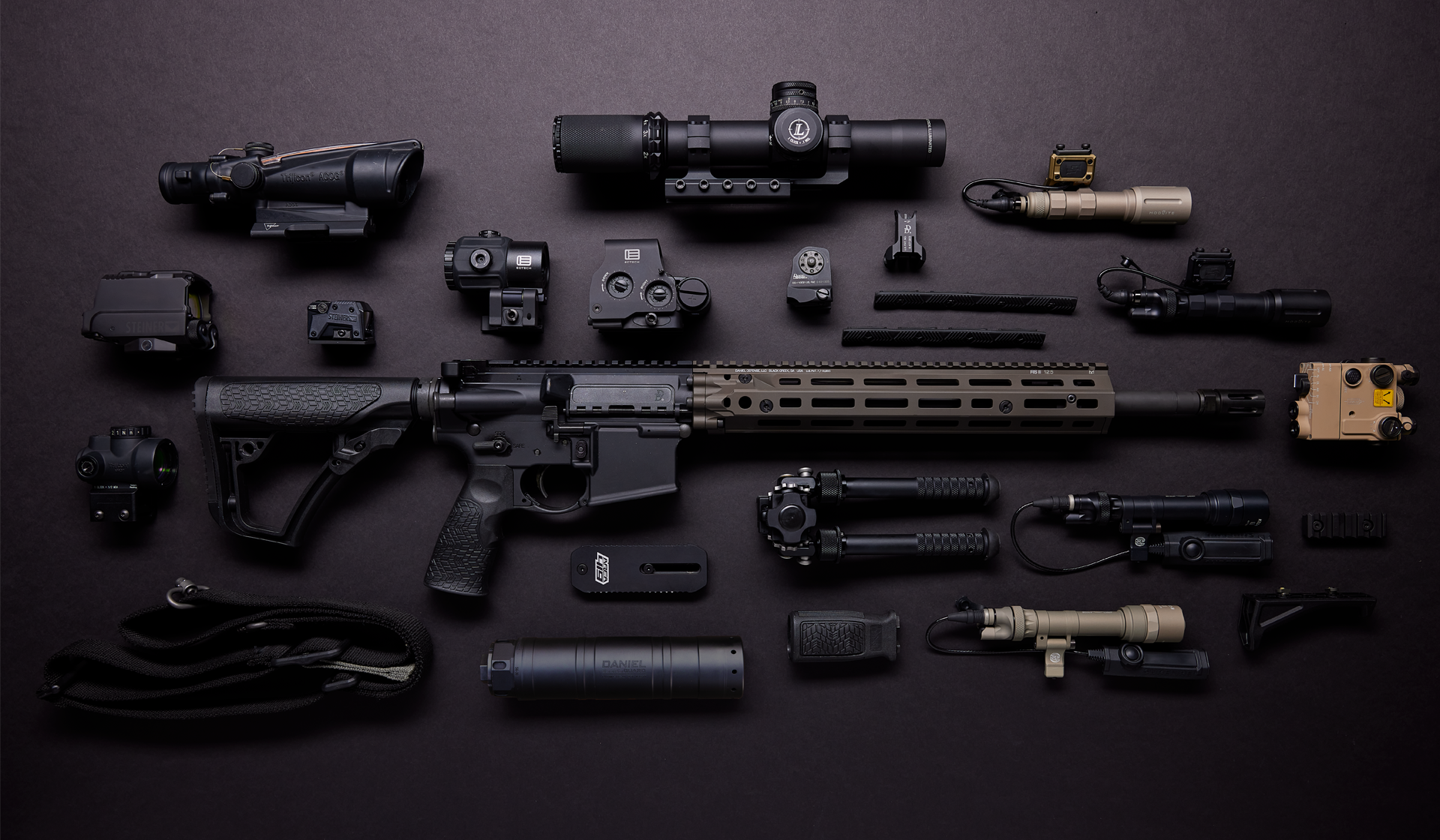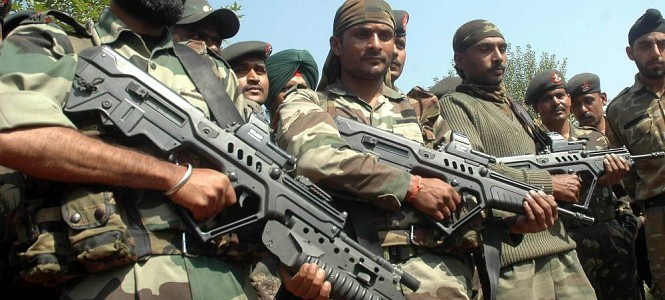Firearm accessories play an important role in enhancing the functionality, safety, and customization of firearms. These accessories are designed to improve a shooter’s performance, comfort, and precision, as well as to provide added protection and security. With a wide variety of options available, firearm accessories cater to various purposes, from competitive shooting to hunting, self-defense, and tactical operations.
This article explores the most common firearm accessories, their purposes, and how they can enhance the user experience.
1. Optics and Sights
One of the most popular categories of firearm accessories is optics, which provide users with better aim and accuracy. Optics come in several forms, each suited to different types of firearms and activities.
- Red Dot Sights: These are non-magnifying sights that project a red dot onto the lens to help with aiming. Red dot sights are commonly used for handguns, shotguns, and rifles, offering quick target acquisition and improved accuracy, especially at close to mid-range distances. They are particularly useful for self-defense and tactical situations.
- Scopes: Scopes are magnified optics used primarily for rifles, providing a clear, zoomed-in view of distant targets. They are especially useful for hunters and long-range shooters. Modern rifle scopes offer features like adjustable magnification, illuminated reticles, and parallax adjustment, which improve targeting accuracy over longer distances.
- Iron Sights: While optics have become more common, many firearms still come equipped with iron sights, which are simple mechanical sights using a front and rear sight to align the target. Iron sights are durable and effective, especially when optics are not available or preferred.
2. Gun Grips
Gun grips are an essential accessory that helps improve the shooter’s control and comfort when handling a firearm. Grips come in various shapes, sizes, and materials, depending on the firearm type and the shooter’s preferences.
- Pistol Grips: These are designed to provide a secure hold on handguns, especially in high-stress situations. Ergonomic pistol grips are designed to reduce recoil impact and provide a more natural, comfortable grip, improving accuracy and stability.
- Rifle Grips: For rifles, there are different grip styles, including vertical grips, angled grips, and traditional stock grips. Vertical grips are often used on tactical rifles for better control during rapid-fire situations, while angled grips are commonly found on modern AR-style rifles for ergonomic handling.
- Rubber and Textured Grips: Many grips come with rubberized coatings or textured surfaces that improve traction, even in wet or sweaty conditions. These grips provide enhanced stability and help mitigate recoil.
3. Magazines and Magazine Accessories
Magazines are an essential part of a firearm, and there are many accessories available to enhance their performance and functionality.
- Extended Magazines: Extended magazines hold more rounds than standard magazines, allowing for longer shooting sessions before needing to reload. These are commonly used in tactical situations, competitive shooting, and self-defense, where a higher capacity may be beneficial.
- Magwell Grip: A magwell grip is an accessory that enlarges the opening where the magazine is inserted into the firearm. It helps speed up reloads and ensures a more secure, smoother magazine insertion, especially under pressure or in tactical situations.
- Magazine Pouches: Magazine pouches allow shooters to carry extra magazines securely and access them quickly when needed. These pouches are commonly worn on a belt, vest, or plate carrier and are popular in tactical operations, hunting, and competitive shooting.
4. Holsters
Holsters are designed to securely hold a firearm, usually handguns, when not in use, ensuring both safety and easy accessibility. There are different types of holsters for different activities, including concealed carry, open carry, and competition shooting.
- Concealed Carry Holsters: These are designed to allow individuals to carry firearms discreetly under clothing. Concealed carry holsters come in various styles, including inside-the-waistband (IWB), outside-the-waistband (OWB), ankle, and shoulder holsters. Comfort and concealment are primary factors in selecting a concealed carry holster.
- Duty Holsters: Duty holsters are worn by law enforcement officers and are designed for quick access and security. These holsters often include retention features such as thumb breaks or locking mechanisms to prevent the firearm from being removed by unauthorized individuals.
- Competition Holsters: Designed for ease of access and speed, competition holsters are commonly used in shooting competitions like IDPA (International Defensive Pistol Association) or USPSA (United States Practical Shooting Association). These holsters are designed to allow for rapid drawing while maintaining safety and stability.
5. Sling Systems
A sling is an accessory used to carry rifles or shotguns, providing the shooter with more mobility and comfort. Slings come in different designs based on the type of firearm and the shooting situation.
- Single-Point Slings: Single-point slings are designed to attach to the firearm at a single location, often at the rear of the rifle. This type of sling allows for quick transitions between carrying and firing the firearm, and it offers flexibility and maneuverability.
- Two-Point Slings: A two-point sling connects to two points on the firearm, typically near the front and rear of the rifle or shotgun. Two-point slings are more stable and can distribute the weight of the firearm more evenly, providing comfort for long periods of carrying.
- Three-Point Slings: A three-point sling is a more complex system that provides additional support and retention. This type of sling is used in military and tactical applications where security and versatility are paramount.
6. Bipods and Tripods
Bipods and tripods are accessories used for stability during long-range shooting or precision target shooting. These accessories help reduce the effects of recoil and improve accuracy by providing a stable shooting platform.
- Bipods: Bipods are mounted on the front of the rifle and have two legs to provide stability on uneven terrain. They are commonly used by precision rifle shooters, hunters, and military snipers to steady the firearm during long-range shots.
- Tripods: Tripods are similar to bipods but offer even more stability with three legs. They are often used in combination with high-powered rifles and are ideal for precision shooting, especially in field conditions.
7. Suppressors and Muzzle Devices
Suppressors (also known as silencers) and muzzle devices are firearm accessories that modify the firearm’s muzzle to reduce noise, recoil, or muzzle flash.
- Suppressors: A suppressor attaches to the end of a firearm’s barrel and reduces the noise generated when a round is fired. By trapping and cooling the expanding gases, suppressors reduce the sound signature, making shooting more discreet. They are popular for tactical operations, hunting, and shooting ranges. In many places, suppressors are regulated and require specific permits for legal ownership.
- Muzzle Brakes: Muzzle brakes are designed to redirect the gases that are expelled when a round is fired to reduce recoil and muzzle rise. These devices improve control and accuracy, especially in high-caliber firearms.
- Flash Hiders: Flash hiders are designed to reduce the visible flash produced when a round is discharged. This is particularly important in low-light situations, as a flash can obscure the shooter’s position and temporarily impair their night vision.
8. Cleaning Kits and Maintenance Tools
Maintaining a firearm is crucial for ensuring its longevity and functionality. Firearm cleaning kits are essential accessories that help shooters keep their firearms in optimal condition.
- Cleaning Rods and Brushes: These are used to remove carbon buildup, debris, and fouling from the barrel and other components of the firearm. Brushes and patches are used to scrub and clean the bore, ensuring accuracy and reliability.
- Gun Oil and Lubricants: Proper lubrication is essential to prevent rust and maintain smooth operation. Gun oils and lubricants are specifically formulated for firearms to ensure they perform well even under adverse conditions.
- Cleaning Kits: Many shooters opt for comprehensive cleaning kits that contain all necessary tools, including brushes, rods, patches, and solvents. These kits make it easier to perform regular maintenance on firearms.
9. Trigger Mods and Accessories
The trigger is one of the most important components for firearm performance. Modifications and accessories related to the trigger can improve accuracy, responsiveness, and overall feel.
- Trigger Pull Kits: These kits allow shooters to adjust the weight and feel of the trigger pull, making it lighter, smoother, or crisper. Trigger pull modifications can improve shooting accuracy by reducing the shooter’s effort in pulling the trigger.
- Aftermarket Triggers: Aftermarket triggers are designed to replace the factory trigger, offering a more customized experience. These triggers can be tuned for specific purposes, such as competitive shooting, hunting, or tactical use.
10. Training and Safety Accessories
Safety accessories are essential for ensuring that firearms are used properly and responsibly.
- Ear Protection: Hearing protection, such as earmuffs or earplugs, is critical to protect the shooter’s ears from the loud noise produced by firearms. Prolonged exposure to gunfire without protection can lead to permanent hearing loss.
- Eye Protection: Protective eyewear, like shooting glasses, shields the eyes from debris, hot gas, or spent casings that may be ejected during firing. Additionally, it helps improve visibility and accuracy in various lighting conditions.
- Trigger Guards: Trigger guards are designed to prevent accidental discharges by covering the trigger, particularly during handling or transportation. They are commonly used for storing firearms safely and preventing unauthorized access.
Conclusion
Firearm accessories play a crucial role in enhancing the performance, comfort, and safety of firearms. Whether you’re a professional marksman, a competitive shooter, or simply an enthusiast, there are a wide range of accessories available to customize and improve your firearm experience. From optics and grips to cleaning kits and safety tools, the right accessories can make a significant difference in your shooting accuracy, comfort, and overall enjoyment of the sport. However, it’s important to consider local laws and regulations when purchasing and using firearm accessories, as some accessories may be subject to legal restrictions.



